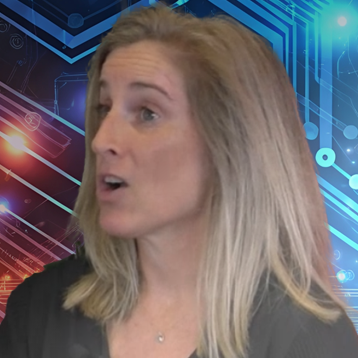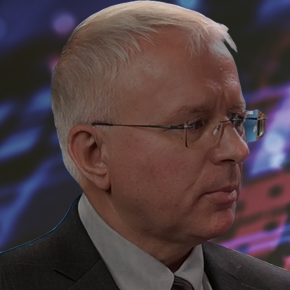September 13, 2022
What is Cost to Cost?

Transcript
Leah Archibald: Accurate costing models help manufacturers design more profitable products, negotiate better deals with suppliers, and decrease risk in their supply chain. But it costs something to get to good cost numbers. How can companies understand and evaluate the real cost to cost?
My guest today can help us answer this question. Dominik Leisinger is an expert in the ways manufacturers build accurate costing processes into their product development and product life cycle management. Before becoming a Product and Partner Excellence lead at Kearney, Dominik Leisinger worked in the front lines of costing as a Senior Cost Engineer for Mercedes-Benz.
He’s here today to help us wrap our heads around cost to cost. Dominik Leisinger, welcome to the podcast.
Dominik Leisinger: Thanks. Great to have this conversation.
Leah Archibald: When I hear the phrase cost to cost, two potential definitions come to my mind. One is the cost of getting to accurate cost models – with the technology investment and set up time that comes with it. You might call that cost to cost.
But the other potential definition is the cost of not solving this problem – not investing in good cost modeling – what that would mean for your costs and the extra hidden costs that are baked into them.
When you hear the phrase cost to cost, what comes to your mind?
Dominik Leisinger: Well, I actually think you picked two very good examples that are both very prominent for our work.
I actually would say that looking back – traditionally – the first one was very prominent – the question of how much do I have to invest to get the capability of developed should cost models and also use them then to my advantage.
But then I would say the whole question around opportunity costs is quite relevant today on the mind of a lot of our clients. With the whole situation of high inflation, with the situation of raw materials being hard to source and supply chains being disrupted, this is an area where should cost models or overall cost models can be very powerful tools to resolve them.
So, I think sometimes we struggle a bit to develop an opportunity cost perspective for clients, but these days it’s rather easy to make them understand.
Leah Archibald: You yourself work with many different manufacturers who, like you said, need help from everything to evaluating the cost of their current inputs, to setting up a whole costing department where maybe none existed before. In your experience, how have these companies evaluated the cost of getting to good cost data and maybe the cost of not doing so?
Dominik Leisinger: When you look at the overall multi-year project of implementing a software and the people you need and all of that investment, people start asking: is this really what we need to do? Can we not do it in the old-school way? We have this one Excel file that still works –
Leah Archibald: The old Excel file.
Dominik Leisinger: – that everybody knows how it works until it breaks or until the one guy retires and then it doesn’t work anymore. But yeah, showing the: well, this is what you leave on the table by not investing. I think this is a big part of where we can help, and where our clients really struggle. Because they just don’t have the experience of how it can be done better.
Leah Archibald: And you mentioned the costs of not doing it are getting more real with the cost of inflation and with the supply chain challenges of today.
Dominik Leisinger: Yeah. The opportunity costs we would usually try to build a case around are very clear in the area of supplier negotiations. Everybody understands right now that with should costings you can do a lot there.
What does it mean to the price that I pay if down my supply chain someone now pays 80% more for steel? And there’s two steps in the value chain in between? There should costing has a role to play.
It’s also a time where being fast is important. We come back to this with the excel file. Well, the solution that you have might be cheap, but it takes you four weeks to get to this answer. And right now in four weeks, a lot can happen in the market.
Leah Archibald: When you think all the way down the supply chain, there actually really is a good case to make to invest in the cost that it takes to getting to accurate cost?
Dominik Leisinger: Definitely. And also it’s just a question of how much can we as an organization help the people who are under the highest amount of stress right now. For the last 12 months this has arguably been the procurement colleagues who have been put under pressure from all sides: from their own production, because supply chains don’t work, and from all of the suppliers because of costs increase. And if these colleagues now also have to do all of their argumentations towards both sides on when should we actually pay a higher price because it’s a good or fair investment and when should we push back and go into what might be very long negotiations, I think every piece of information we can offer of help to them, we should do it.
Leah Archibald: Let’s dive deep into the technical toolkit that you use. Let’s say a company brings in aPriori to extract geometric cost drivers from their CAD models and they run those through digital factories to give them an accurate should cost for their components or assemblies. How does that compare to the cost of the technological investment?
Dominik Leisinger: Usually it’s not so hard to build a business case, to be honest, especially on the direct procurement effect that we usually can generate with accurate should costings.
Point one: if you talk about modern state-of-the-art solutions, like aPriori, they invest in off-time, which today is probably the most relevant investment any company can make given the lack of talent that we see in all mature markets. So, the investment of time is very limited. I think this is already powerful argument.
But then the pure savings of getting better deals. Prices can go from, let’s say 4% or 5% in direct negotiation with no changes, up to 15% with aPriori. And this is only procurement.
Of course, aPriori can get even more powerful in the development phase. What our studies show is that on average 40% of project work is spent redoing something that was already done. 40% of project work! Tools like aPriori are just very powerful in avoiding that.
Leah Archibald: Well, Dominik Leisinger it’s been a pleasure, thank you so much for joining me on the podcast today.
Dominik Leisinger: Well, thanks a lot for having me.







